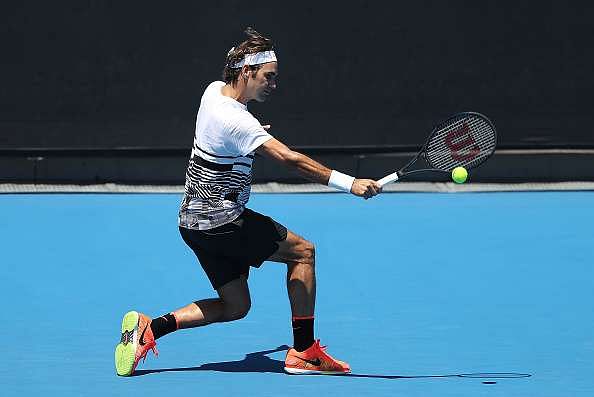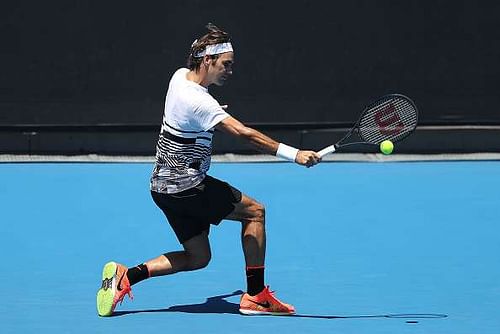
New Goals Roger Federer can aim for in 2017
Back, but with nothing to prove, Roger Federer has declared himself at the 2017 season. Although he is yet to compete in a tournament at the Tour level, the 17-time Grand Slam winner gave fans, enthusiasts and writers something to cheer about over the off-season, when he streamed practice sessions to fans from his off-home, off-tour base of Dubai.
The Swiss ace was seen practicing with new Nadal nemesis Lucas Pouille towards the end of the year, but revealed later he had been back to full-time practice much earlier. Following his epic Wimbledon semi-final last year against Milos Raonic, Federer had announced he would be on sabbatical until the end of the calendar year to recuperate.
What he would later go on to explain was that his meniscus injury, one that has plagued him in periods throughout his career, had returned, and this time, with age not exactly on his side as tennis players’ careers go, would take longer to recover from.
But there is no reason to believe, now, that we cannot see the Roger Federer of old return. He had mixed luck at the Hopman Cup, and although he did not make the finals, Federer defeated the eventual men’s singles champion, Richard Gasquet, who won with Team France, in a thoroughly one-sided match. Then, the Swiss played a young sensation who many have touted as being as prodigiously skilled as Federer himself – German ace Alexander Zverev, who at 19 is already being touted as a future No. 1, and the pair played three sets of electric tennis during which the older player, whom Zverev has repeatedly called his inspiration, not even breaking a sweat.
Federer has said that one of the key aims of his 6-month break in 2016 was so that he would have “at least a couple more years of good tennis” to play – and some short – and long-term goals could help him down that path:
Returning to maximum fitness

Federer said in a number of interviews last year that fitness was in fact his ultimate goal, and that he would “like to be playing until [I’m] 40. Given the longevity of Federer’s career and the standard he has been able to maintain in his game so far, that is not an improbability.
At his 2016 Wimbledon semi-final against Milos Raonic, Federer appeared to roll his ankle significantly, and looked to be in serious pain following the match – an injury that perhaps cemented his decision to take a break.
That said, extended breaks, such as the one he took in the latter half of the 2016 season, have been crucial in his recovery. Strategic breaks in competition – as Federer has done all his career – will help that, and given Federer is now at a stage in his career where he no longer needs, in his own words, “to prove anything”, that rest will result in career longevity – and more victories for the Swiss Maestro.